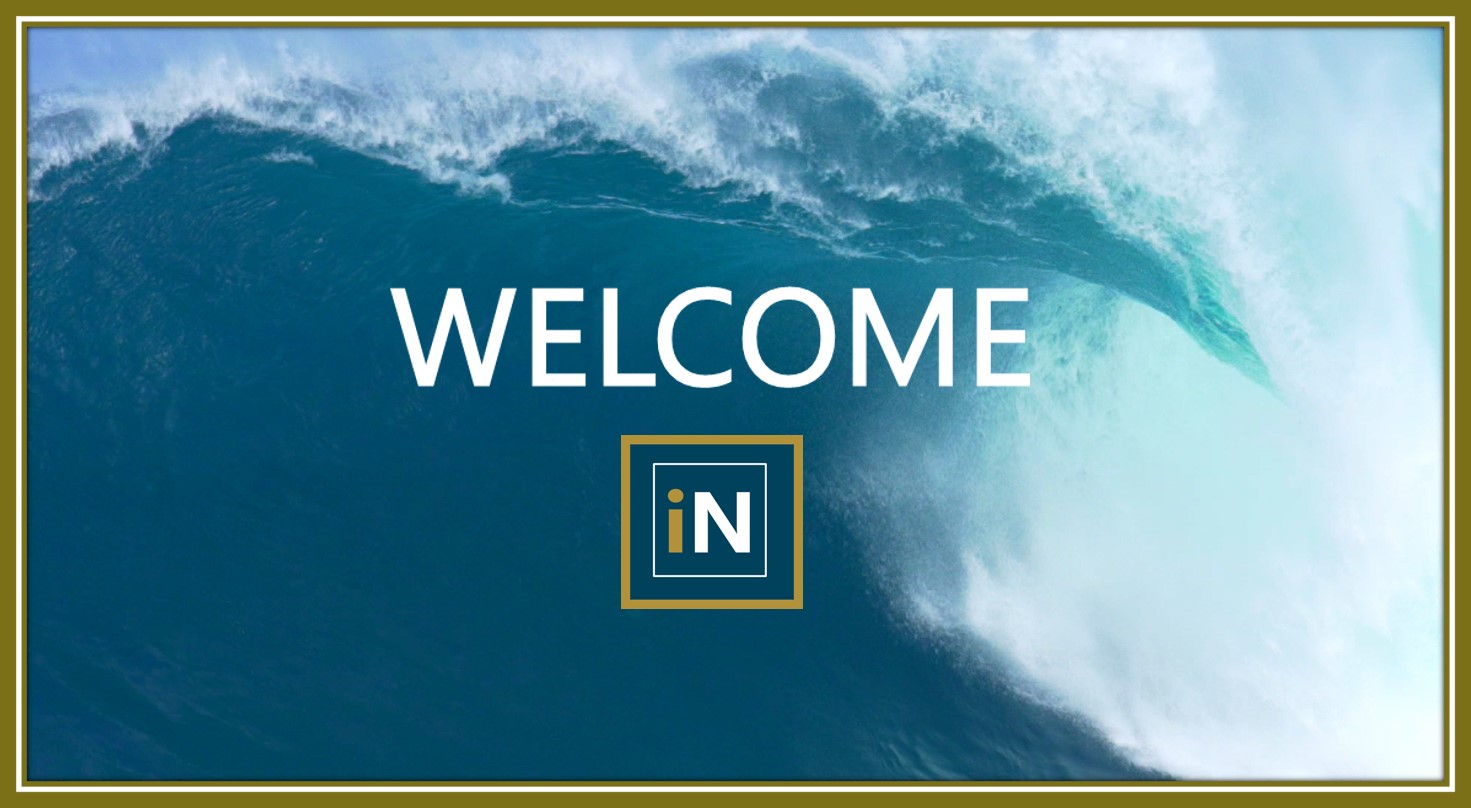The Impact Individualism Is Having
Throughout Today’s Sexually Depressed Generation
By John R. Iannuzzi
YouriNspirationNation

In just over a decade, social media has evolved from an exciting innovation connecting people across continents into a formidable force reshaping our reality. At first, it promised empowerment—an open marketplace for ideas, a space for connection and community. Yet, as the platforms scaled, the cracks began to show. We’ve become painfully aware of the negative impact social media is having on the fabric of society: rising polarization, misinformation, mental health crises, and the erosion of trust.
The question we face now is not whether social media is doing damage—it clearly is—but what we can do to fix it. How can we salvage the undeniable benefits of these platforms while mitigating the harm they inflict on our social fabric?
The Social Media Conundrum: When Connection Becomes Corrosion
There’s no denying that social media has revolutionized communication, giving us unprecedented access to information and enabling new forms of activism and awareness.

However, this empowerment comes with costs. Studies show that heavy use of social media correlates with increased anxiety, depression, and feelings of isolation. Despite being more connected than ever, many of us feel lonelier.
Part of this paradox comes from the way social media platforms are designed. They thrive on engagement, which often means amplifying outrage, sensationalism, and tribalism. Algorithms favor polarizing content because it keeps people scrolling, liking, and sharing—fostering an environment ripe for echo chambers and misinformation.
In short, we are sacrificing quality for quantity in our interactions.  The pursuit of validation in the form of likes and shares has diluted meaningful discourse into a noisy contest for attention, where misinformation can spread faster than facts and where fear and outrage often drown out empathy and understanding.
The pursuit of validation in the form of likes and shares has diluted meaningful discourse into a noisy contest for attention, where misinformation can spread faster than facts and where fear and outrage often drown out empathy and understanding.
The Solution Starts with Accountability—From Platforms to People
Addressing these issues demands a multifaceted approach. First, social media companies must be held accountable for their role in shaping public discourse and mental health. But the solution also requires individual responsibility and a societal shift in how we use these platforms.
1. Platform Responsibility: Building Ethical Technology
Social media platforms should prioritize ethical design over profit-driven algorithms that exploit human psychology. This can be done in several ways:
Transparency

Social media companies need to be transparent about how their algorithms work, allowing independent researchers and regulators to ensure that these systems are not promoting harmful content. In some cases, it might even mean giving users control over the type of content they see—prioritizing educational, informative, and civil content rather than outrage and clickbait.
Stronger Regulation and Oversight
 Governments need to step in with thoughtful regulation that encourages responsible behavior from tech giants. This could include stricter rules around data privacy, transparency in content moderation policies, and penalties for platforms that fail to curb the spread of harmful misinformation.
Governments need to step in with thoughtful regulation that encourages responsible behavior from tech giants. This could include stricter rules around data privacy, transparency in content moderation policies, and penalties for platforms that fail to curb the spread of harmful misinformation.
Mental Health Safeguards

Platforms should integrate more features that encourage mindful usage and provide mental health resources. Implementing features that promote time-limited engagement or reward breaks from the platform could help mitigate the addiction-like behaviors these platforms cultivate.
2. Education for a New Media Literacy
The rapid rise of digital media has outpaced our ability to navigate it effectively.  Many people, particularly younger users, are not equipped with the skills to critically evaluate the content they consume. This makes them more susceptible to fake news, polarization, and the negative psychological impacts of social media.
Many people, particularly younger users, are not equipped with the skills to critically evaluate the content they consume. This makes them more susceptible to fake news, polarization, and the negative psychological impacts of social media.
To counteract this, we must promote digital literacy at all levels of society:
Critical Thinking Education
Schools and universities need to integrate media literacy into their curricula, teaching students how to distinguish fact from fiction, identify biases, and understand how algorithms influence what they see online.
Public Campaigns
Governments, NGOs, and social media platforms should launch widespread public education campaigns that inform users about the psychological effects of social media, offering strategies to foster healthier online behaviors.
Parental Guidance
Parents play a critical role in shaping how their children interact with social media.  Providing parents with resources on how to talk to their kids about social media and teaching them to model balanced, healthy social media habits is vital.
Providing parents with resources on how to talk to their kids about social media and teaching them to model balanced, healthy social media habits is vital.
3. Individual Responsibility: Reclaiming Our Attention
Social media companies have optimized their platforms to hold our attention for as long as possible, often at the expense of our well-being. But as users, we must reclaim control over our digital lives. This requires a deliberate effort to cultivate healthier online habits:
Mindful Engagement
Instead of using social media passively, we should engage with it consciously—choosing what to read, share, and interact with based on substance rather than emotional triggers. This may mean unfollowing accounts that thrive on negativity and curating our feeds to reflect balanced, diverse perspectives.
If Technology Connects People Why Are People Lonelier Than Ever
Digital Detoxing
Periodic breaks from social media can help us reset and rediscover offline joys. Implementing regular “digital detoxes” or setting daily limits on usage can help prevent the feeling of being overwhelmed by the constant barrage of information and notifications.
Implementing regular “digital detoxes” or setting daily limits on usage can help prevent the feeling of being overwhelmed by the constant barrage of information and notifications.
Supporting Authentic Interactions
Social media doesn’t have to be shallow or performative.

We can choose to use it as a tool for meaningful connection—sharing ideas, art, stories, and experiences that bring value to our lives and the lives of others.
Authentic engagement should be prioritized over seeking likes and validation.
Click HERE to Watch More
iNspirational Videos
A Healthier Digital Future
The negative impact of social media on society is undeniable, but it is not inevitable. The platforms that once seemed destined to bring us closer have instead sown division and distraction. Yet, this moment of reckoning also presents an opportunity. If we can learn to build, regulate, and use social media in ways that prioritize human well-being and genuine connection, we can reclaim its promise.
It’s time for platforms, governments, and individuals to step up. Together, we can ensure that social media is not a force that frays the fabric of society but rather one that strengthens it. The solution lies not in abandoning social media altogether, but in reshaping it to reflect our higher values: empathy, truth, and community. The future of our collective digital lives depends on it.
Featured Book
What makes us different from other inspirational/motivational online content providers is our monthly
Wave of iNspiration Showcase!
Each month the Showcase features a new Blog, Video, Book, and Quote, highlighting an inspirational, motivational, and educational topic from the industry’s most influential writers, bloggers, authors, and publishers.
 ↓
↓
Trending throughout iNation…
- 5 Ways to Stop Your To-Do List Anxiety And Actually Feel in Control
- The heart-warming story about Hachiko – A Dog who taught us about loyalty and love!
- The Myth Behind Why Being Busy Makes You Feel Important by Heather Picard
- How to Be an “Imperfectionist” By Stephen Guise
- Leadership Excellence – A Model for Sustained Success By Dr. Philip A. Iannuzzi, Jr. (Retired Colonel, U.S. Air Force)
- Gen Z Has A Manchild Problem, And It’s Scaring Everyone
- 7 Reasons You Are Unsuccessful. It Isn’t Because You’re Lazy. It’s This.
- If Technology Connects People Why Are People Lonelier Than Ever
- We’re all beginners in life who’ve been given a lot of advice…just be sure not to ignore these 7 powerful pieces!
- 7 Ways to Stop Making Excuses By Vera Sweeney


 The pursuit of validation in the form of likes and shares has diluted meaningful discourse into a noisy contest for attention, where misinformation can spread faster than facts and where fear and outrage often drown out empathy and understanding.
The pursuit of validation in the form of likes and shares has diluted meaningful discourse into a noisy contest for attention, where misinformation can spread faster than facts and where fear and outrage often drown out empathy and understanding. Governments need to step in with thoughtful regulation that encourages responsible behavior from tech giants. This could include stricter rules around data privacy, transparency in content moderation policies, and penalties for platforms that fail to curb the spread of harmful misinformation.
Governments need to step in with thoughtful regulation that encourages responsible behavior from tech giants. This could include stricter rules around data privacy, transparency in content moderation policies, and penalties for platforms that fail to curb the spread of harmful misinformation. Many people, particularly younger users, are not equipped with the skills to critically evaluate the content they consume. This makes them more susceptible to fake news, polarization, and the negative psychological impacts of social media.
Many people, particularly younger users, are not equipped with the skills to critically evaluate the content they consume. This makes them more susceptible to fake news, polarization, and the negative psychological impacts of social media. Providing parents with resources on how to talk to their kids about social media and teaching them to model balanced, healthy social media habits is vital.
Providing parents with resources on how to talk to their kids about social media and teaching them to model balanced, healthy social media habits is vital. Implementing regular “digital detoxes” or setting daily limits on usage can help prevent the feeling of being overwhelmed by the constant barrage of information and notifications.
Implementing regular “digital detoxes” or setting daily limits on usage can help prevent the feeling of being overwhelmed by the constant barrage of information and notifications.


 ↓
↓

